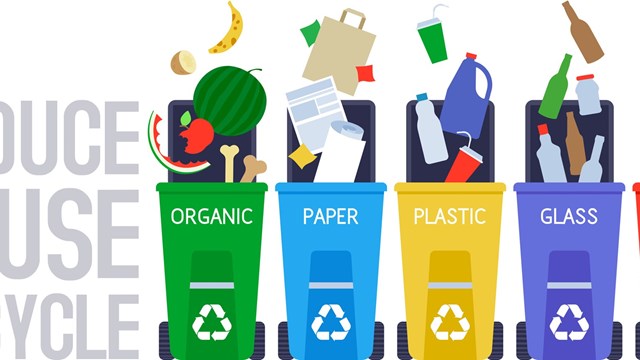
Unless someone strenuously objects, I‘d like to start an argument. When it comes to sustainability and the “green” theme, condominiums and HOAs don’t get no respect.
The primary focus of the U.S. Green Building Council and its Leadership in Energy and Environmental Design (LEED) program is on the design of new construction. Propose a tower in Dubai with a couple of solar panels and the project goes viral. Implied is the proposition that LEED certification brings with it recognition of reduced future operating costs, which translates to higher market value at resale.
Yes, it’s certainly true that it’s easier to introduce new technology at the conceptual design stage than trying to fit it into existing construction. Still, it seems to me that the LEED program is noticeably less inspirational when it addresses existing multi-housing. Few of us will become uncontrollably motivated in trying to save the planet and operating costs through more efficient cleaning products and low VOC paints. And yet, a case might be made that perhaps those of us in the industry share some responsibility for this. Perhaps if we shared more of what we discovered works (and does not work) in controlling capital and operating costs we might get some long deserved recognition.
Consider Multi-Housing Initiatives
After all, where else but in existing construction could the feasibility of now-accepted sustainable techniques and products be tested?
Take, for example, harvesting rainwater to conserve potable water and reduce costs. We recently worked with a client association that was spending what seemed like an exorbitant amount of money to water lawns and shrubs. In the arid to semi-arid western U.S., where water is a precious commodity, rainwater is collected and used for non-potable purposes such as crop and lawn irrigation.
Might those techniques be used by condominium associations in the Northeast? Here is what our investigation uncovered.
Rainwater harvesting, preferably done by collection of roof runoff, takes place in four steps: collection, storage, treatment and distribution. The roof runoff needs to be treated to remove the “first flush” of debris that has been sitting on the roof since the last rain event. The filtered water is collected in a buried cistern, usually of pre-cast concrete, the size of which is a function of the area of contributing roofs and the frequency/quantity of rainfall. Rainwater harvesting designers try to size the cistern (which is the major cost item) for about four weeks’ worth of irrigation, which in New England ranges from about three to four inches of rainfall. A pump within the cistern pressurizes the irrigation network/ sprinkler heads with the harvested rainwater. Another source, typically purchased drinking water, must be available when there is no stored water available. A backflow preventer defeats crossover of rainwater into the potable water supply.
Return on Investment
Clearly, there is a fairly significant amount of equipment making up the initial capital investment. And, of course, that equipment will require future maintenance; filters and the cistern itself require periodic cleaning. Initial costs for a rainwater harvesting system range from $0.50 to $1.10 per gallon of cistern storage (installed) depending on site topography, building spacing, and the logistics of the existing irrigation system. Key, of course, in the calculation for the return on investment is the cost of the purchased water the rainwater is replacing.
Our client association’s buildings were fairly well spread out which meant that for a central system, all the individual roof contributions would need to be piped to a common header feeding one large cistern. Add in the cost for the connections to the municipal water system, and the return on investment could not be justified. The client chose instead to reactivate two wells to feed the irrigation system—a common solution.
But what about individual rainwater harvesting for clusters of three or four buildings? The roof downspouts of another client association all discharged to their individual drainage fields. Could their outfall be diverted to cluster systems of three or four buildings? Here the cost of the multiple cisterns was acceptable but the logistics of supplying each system with backup municipal water shifted the ROI to marginal for their particular financial position. Bottom line: rainwater harvesting for landscape irrigation is heavily site-specific, responding to each set of unique conditions. But in our research we learned something that everyone can use. Having an audit performed of your irrigation system could save you significant operating costs if you are buying water from a municipal or private source. It should be done by a certified auditor who will review the design, analyze the water demand for your specific landscape and test each zone to make sure the right amount of water goes where it should for as long as it should. The fee is well worth the investment.
Capital replacements are routine with condominium associations. But they don’t need to be replaced-in-kind; they can be opportunities for introducing sustainability.
Case in point: The replacement of a roof over one client association’s indoor swimming pool. The new roof structure is now well-insulated and its white plastic membrane cover reflects the solar radiation. The result will be reduced winter heating and summer cooling costs. And with easier control over the ambient humidity levels, the masonry walls should not sweat to the extent they once did. We will be checking future operating conditions and energy costs. Surely, there are some LEED points just waiting to be awarded here.
The takeaway is that management of existing condominium and HOA associations have long been in a sustainability and “green” mode as they look to get the best return they can for the membership’s buck. Need we be reminded that the need is greater in these lean economic times? Perhaps expanded sharing of our individual efforts will help in that regard.
Robert J. Burns, PE, RS, is the principal of Burns Associates-Engineers of Portsmouth, New Hampshire.






Leave a Comment